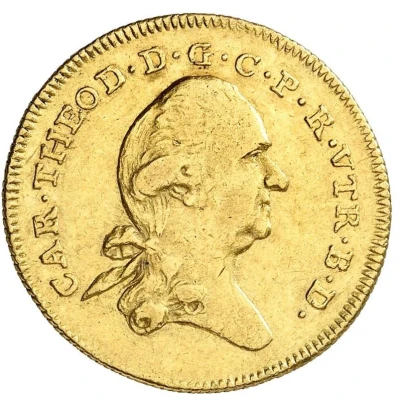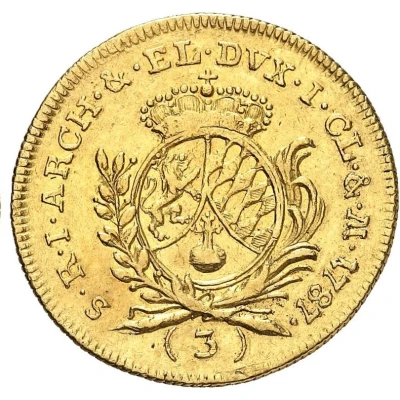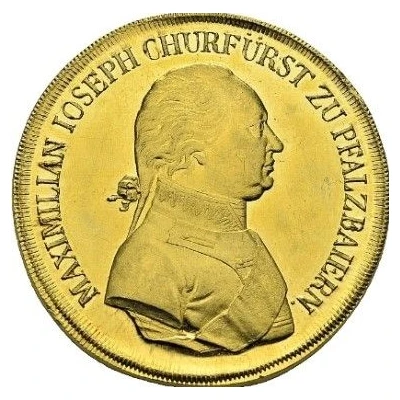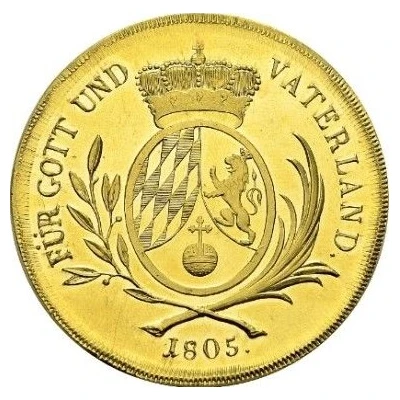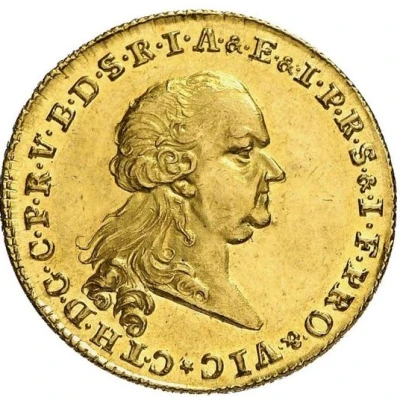
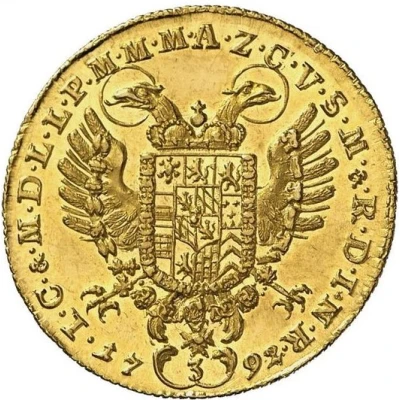

© Fritz Rudolf Künker GmbH & Co. KG, Osnabrück and Lübke & Wiedemann KG, Leonberg
3 Ducats - Charles Theodore Vikariat
| Gold (.986) | 10.43 g | - |
| Issuer | Electorate of Bavaria (German States) |
|---|---|
| Prince elector | Charles Theodore (1777-1799) |
| Type | Standard circulation coin |
| Years | 1790-1792 |
| Value | 3 Ducats (3 Dukaten) (10.5) |
| Currency | Conventionsthaler (1753-1806) |
| Composition | Gold (.986) |
| Weight | 10.43 g |
| Shape | Round |
| Orientation | Medal alignment ↑↑ |
| Demonetized | Yes |
| Updated | 2024-10-04 |
| Numista | N#266780 |
|---|---|
| Rarity index | 97% |
Reverse
Double-headed eagle with crowned complex arms on breast
Script: Latin
Lettering:
• I • C • & • M • D • L • L • P • M • M • M • A • Z • C • V • S • M • & • R • D • I • N • R •
1792
3
Interesting fact
One interesting fact about the 3 Ducats - Charles Theodore (Vikariat) 1790-1792 coin from Electorate of Bavaria (German States) is that it was minted during a time of great political and social change in Europe. The coin was issued during the reign of Charles Theodore, who was the Elector of Bavaria and a key figure in the German Enlightenment. This period saw significant reforms and modernization efforts in the region, and the coin's design reflects some of these changes. For example, the obverse of the coin features a portrait of Charles Theodore wearing a modern-style wig and clothing, rather than the traditional royal attire seen on earlier coins. Additionally, the coin's reverse features an image of a lion, which was a symbol of strength and courage that was popular during the Enlightenment era. Overall, this coin is a fascinating piece of history that provides a glimpse into the cultural and political shifts that were taking place in Europe during the late 18th century.
